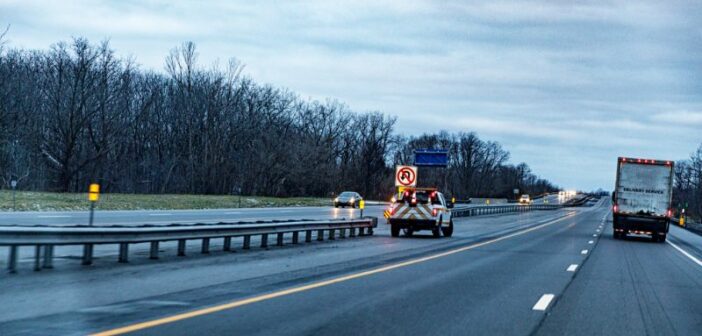During ITS America, Panasonic introduces its latest platform, Cirrus 2.0, as part of its Cirrus by Panasonic initiative. This enhanced platform offers a comprehensive, seamlessly integrated approach to managing vehicle-to-everything (V2X) ecosystems. Designed to meet the needs of state Departments of Transportation (DOTs) and commercial fleet operators, Panasonic’s Cirrus platform provides an extensive industry-leading cloud toolkit. This technology aims to enhance roadway mobility and provide critical information to improve safety and help save lives. Currently, select U.S. state DOTs and fleet operators are utilizing Cirrus by Panasonic to oversee V2X operations across numerous infrastructure devices on highways and intersections. These operations support various essential vehicles, including snowplows, emergency response vehicles, transit buses, and maintenance fleets.
Key features of Cirrus by Panasonic 2.0 include:
- Interoperability between advanced capabilities of V2X systems and traditional transportation information
- Management platform using intelligent data collection to enable advanced artificial intelligence (AI) and Machine Learning (ML) insights
- A completely redesigned user experience (UX) which incorporates requests and suggestions from the Cirrus user base to streamline the way V2X systems are accessed by both fleet and roadway infrastructure operations staff
“With the launch of Cirrus 2.0, Panasonic applies learnings drawn from over seven years of statewide V2X technology installations, deployment, and platform engagements to bring technical and practical improvements directly to our entire user base,” said Rob Zimmer, Director Cirrus, Panasonic Smart Mobility Office. “Our new platform features align with the U.S.DOT and Federal Highway Administration primary V2X deployment goals, and customers know that Cirrus 2.0 can help them achieve the same goals on their roadways.”
Resolving V2X Interoperability
Operating as a “data broker” between various connected systems and core Cirrus applications, Cirrus seamlessly manages the variations in data elements produced by connected systems (such as different units of measurement, naming conventions, etc.) and variations in the contextual factors of IoT platforms operating in very different domains (such as how traffic signal data might differ dramatically from utility work order systems). By handling these domain specific data translations independently, Cirrus 2.0 allows many different tools to “talk” to connected vehicles in a consistent way. It also uses automation to reduce the cognitive load of users and expand the range of source data available for connected vehicle safety and mobility solutions.
Scaling V2X Data Management
Cirrus 2.0 simplifies the platform’s data architecture for scalability and implements patent pending V2X data processing capabilities at ingestion points to eliminate data waste, data noise, and improve redundancy. Cirrus 2.0 implements on-demand load balancing across the platform to manage the variability of data ingestion from different IoT systems, each with its own data flow characteristics; for example, some data volumes follow traffic demand with morning and evening peak times while others are incident or weather dependent and can spike suddenly. The Cirrus 2.0 platform offers our patent pending technique for reducing duplication in raw data without giving up any detail from the data, which allows up to 50% reduction in post-ingestion pipeline volumes for some data sources, that can reduce costs and improve platform performance.
Improved User Experience
V2X deployments require highly flexible and customizable user interfaces to effectively meet workflow needs, and the Cirrus 2.0 UX focuses on data ecosystem access. Distributed dashboard and reporting tools with mobile device support, combined with SQL-based research functionality provides customers with both unrestricted access to the data and clear visual workflows. In addition, Cirrus 2.0 insights are designed to be integrated directly into existing applications already in place. By providing easy to attach application programming interfaces, Cirrus 2.0 now delivers insights, warnings, and configuration options directly into the existing workflows of your staff. This minimizes re-training of users, embeds V2X capabilities into existing incident response formulas, and brings collected V2X data to roadway operators seamlessly.
The new Cirrus 2.0 platform also includes enhanced incident detection, with tools for leveraging connected vehicle data in different operating environments. It uses an advanced data architecture with insights that can be shared across a variety of information systems. Additionally, its health monitoring capabilities have been refined and enhanced to improve system uptime, and the efficacy of a deployment from a cost management perspective – user device recovery operations can be completed remotely and automatically by Cirrus 2.0, reducing the potential for costly field repairs.
For more information about Cirrus by Panasonic, visit the website here.
Related News:
MCPTT T-Mobile Mission Critical Push-to-Talk Launched
Cisco and TELUS Pave the Road for Enhanced Connected Car Experiences

